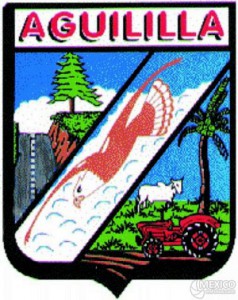The municipality of Aguililla, Michoacán, is closely linked to Redwood City, California, over 2900 kilometers (1800 miles) away. Redwood City has about 37,000 Latino residents, perhaps half of which were originally from Aguililla. There are almost as many Aguilillans in Redwood City as there is in the municipality of Aguililla, which has about 25,000 residents. Aguililla and Redwood City are officially “Sister Cities”.
How did this linkage form? Under the Bracero program many workers from Aguililla got temporary visas to work in California’s San Joaquin and Salinas valleys. Since agricultural work was seasonal, the immigrants looked for more permanent employment.
A number found jobs in Redwood City, just south of San Francisco. Word spread to Aguililla relatives and friends in the Bracero program. They headed for Redwood City where they got assistance in finding jobs and homes from earlier Aguilillan migrants. Many returned to their hometown and soon everyone in Aguililla learned about the good jobs and good life in Redwood City.
Before long there was a significant stream of workers leaving Aguililla headed for Redwood City. Many early migrants became permanent and moved their families. But they retained their ties to Aguililla and made return trips from time to time so their children could learn their roots and see their grandparents. The remittances sent back from workers in Redwood City have been important to the Aguilillan economy for over 60 years.
This is an example of a migration channel which links two rather distant places. There are numerous migration channels between specific towns in Mexico and particular places in the USA. We look at other examples in other posts.
The principle of distance decay suggests that the strength of links between settlements is usually inversely proportional to the distance between them (places close together, strong links; places further apart, weaker links). Migration channels cause anomalies in this pattern, since they often lead to strong spatial interactions which do not match those expected from distance decay.
For previous posts about remittances, the funds sent home by migrant workers, see:
- The 10 states in Mexico with the highest percentage of homes receiving remittances
- The 10 states in Mexico receiving the most remittances in total
- The 10 states in Mexico receiving the highest remittances per person
Migration between Mexico and the USA is the focus of chapter 25 of Geo-Mexico: the geography and dynamics of modern Mexico. Ask your library to buy a copy of this handy reference guide to all aspects of Mexico’s geography today! Better yet, order your own copy…

Sorry, the comment form is closed at this time.